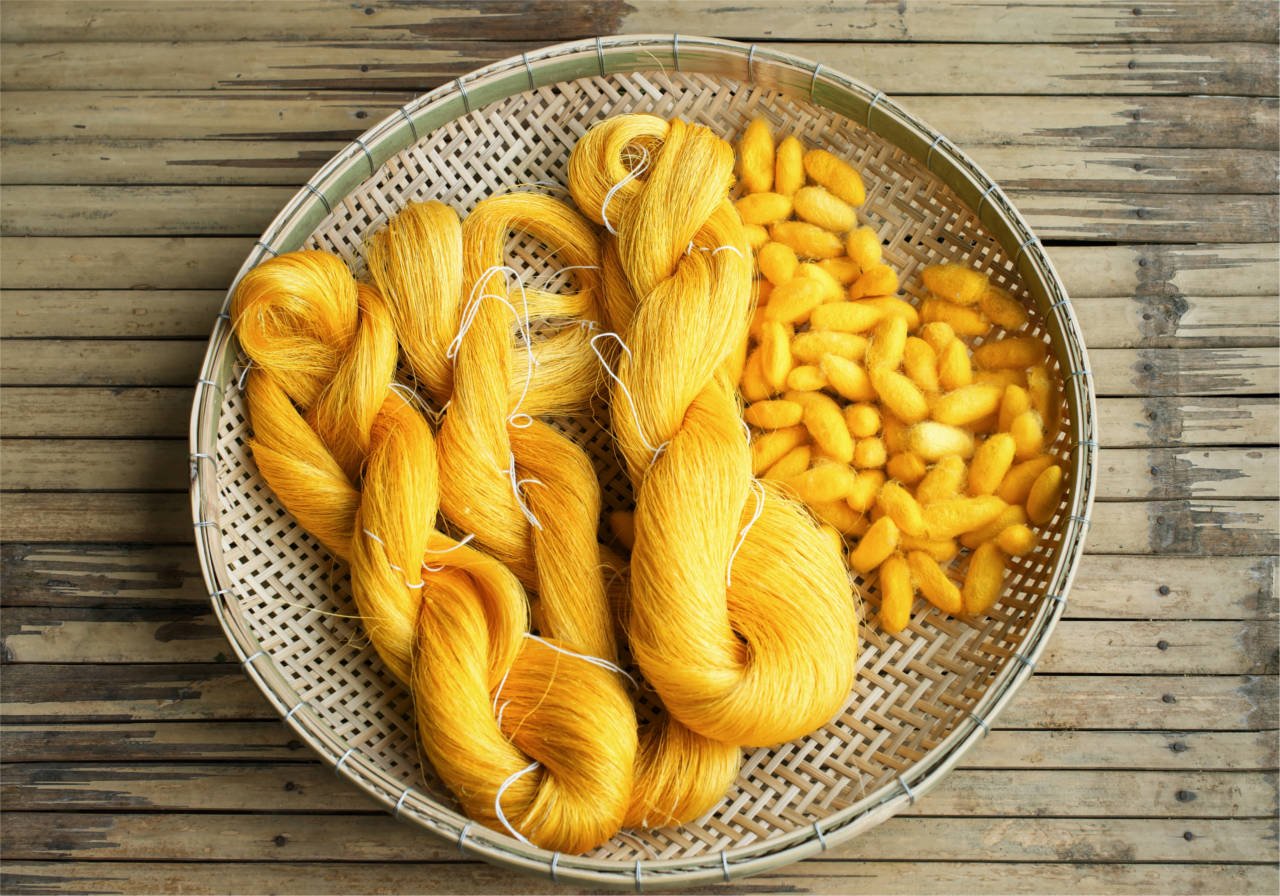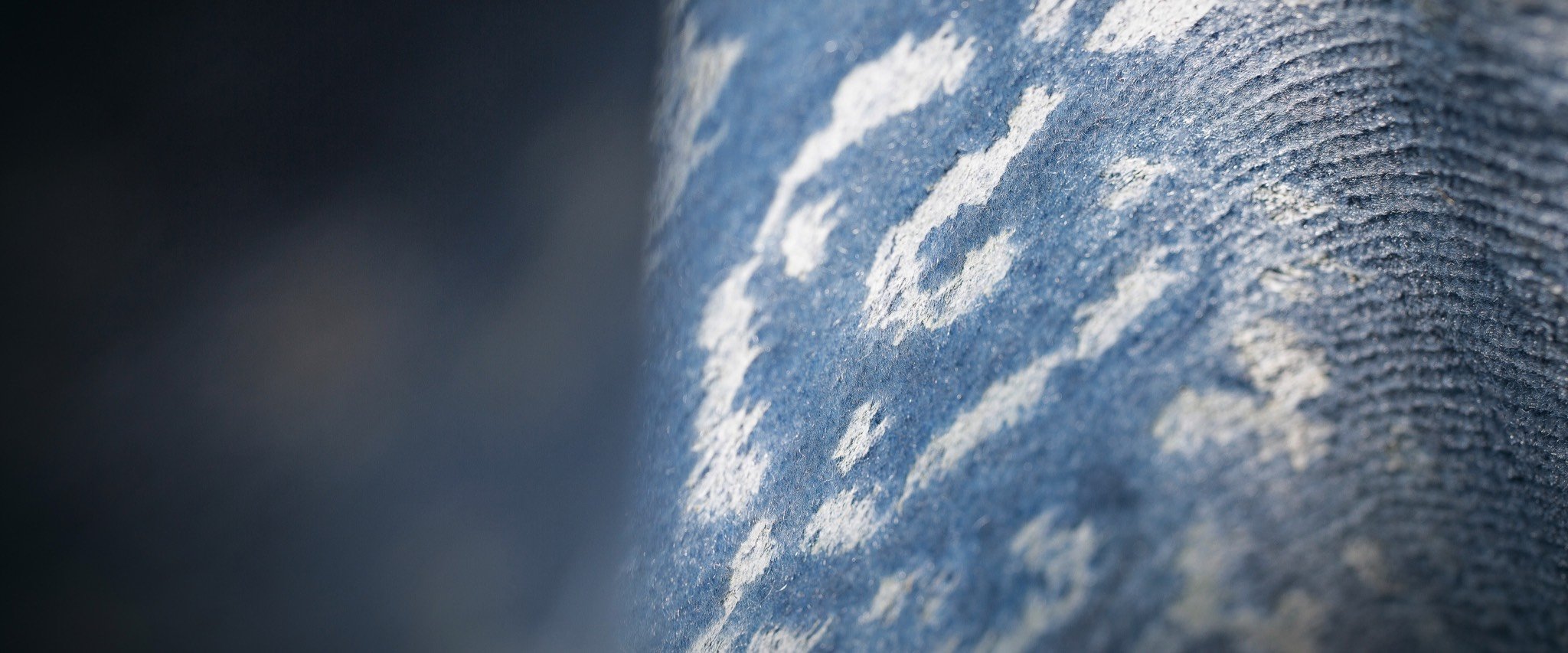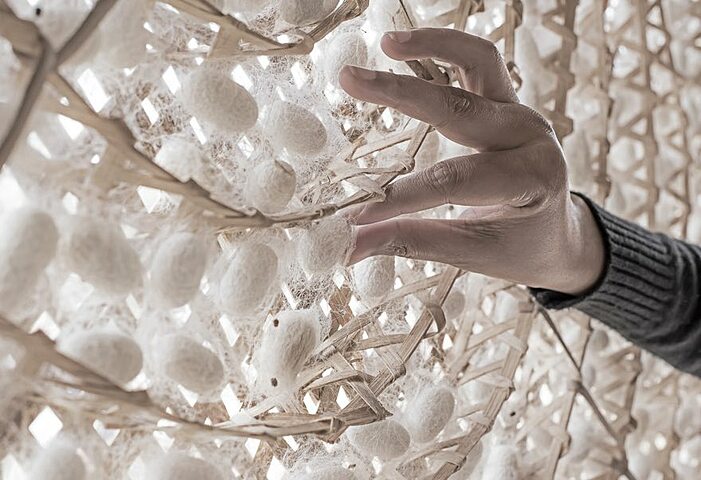SILK: PRECIOUS NATURAL FIBER WITH CHINESE TRADITION
Silk is a very precious, animal natural fiber, known for its sheen and its high tear strength. Traditionally, silk is being extracted from the cocoon of silkworms. These are the worms of the domestic silkmoths which are originally native to China. The Chinese silk production has a long history:
It is assumed, that the first silk products were created during the 3rd millennium before Christ. In the 2nd century anno Domini, finally the export of Chinese silk via the silk road to Europe increased. Among China, also Japan, India and Thailand became important producer countries of raw silk in the meantime. Since the 15th century, the precious fiber is important also in the carpet production.
Exclusive characteristics of silk
Silk is a very special fiber: it is the only textile continuous filament that exists in our nature. The precious fibre consists of the long-chained animal protein molecules Fibroin and Selecin, which are responsible for the exceptional tear strength and sheen of the silk thread. The structure of the proteine molecules are very similar to the proteine structure of our skin. That is why we conceive the smooth, fine silk fabrics as “familiar” and comfortable to wear.
Further, the silk fiber has a temperature-balancing effect: During cold temperatures it warms you up, during warm temperatures it has a cooling effect. It even braves moisture: Silk can soak up humidity up to 30 percent of its own weight and still doesn’t feel wet. Moreover, the fiber dries quickly and crinkles very little.
How a silk thread develops

There are different species of caterpillars that produce silk of diverse quality. The silk of the mulberry silkworm moth is of the highest quality. Therefore, this silk is being produced most frequently. The clue is in the name: Mulberry silkworm moths live on nothing but the fresh leaves of the mulberry.
Within the glands of the bottom lip, the silkworms produce silk threads. In one hundred thousand twistings (around 3000 metres of length), they lay those threads around themselves. This way, they create a cocoon to pupate.
To avoid that this special and unique natural existing continuous filament is being damaged, the cocoon is being processed before it is finished. Eventually, the cocoon delivers three different silk qualities: The net silk is the precious continuous filament that is being unwinded or uncoiled from the cocoon. This filament is particularly smooth and fine. The remaining short fibres that remain after uncoiling are being spinned to the more grosgrain bourrette silk. After having uncoiled the long filament, further silk fibres remain which cannot be uncoiled as a whole. From these fibres, the so-called spun silk is created.
After uncoiling, the silk is being put into soap water to rid off the bast that agglutinates the filaments. The more bast is being removed, the more shiny and softer the filament will be.
To produce yarns for weaving, finally several silk filaments of the net silk are being twisted together. This is how the weft and warp threads are created.
Silk in the carpet production

Silk is als used for carpet production. From the year one, the precious filament has been appreciated as a noble material and so the hand-knotting of silk carpets has a long tradition. The first proven silk carpets date back to the 15th century, when the precious carpets originally were produced only in court manufactures. At times, also farmers and nomadic people hand knotted silk carpets. Further to China, also Turkey, Iran and India are important producers of silk carpets.
Differences in the quality of silk carpets
There are pure silk carpets and carpets, where only the tuft is of silk. For pure silk carpets, the silk filament is used for thread, weft and tuft. Such high-class carpets usually come from Turkey, Iran or China. Particularly valuable are silk carpets from Hereke or Kayseri. Also the Iranian provinces Isfahan and Ghom are well-known producers of valuable carpets of pure silk.
Exceptional knot count

Silk filaments are very fine and therefore allow very high knot counts of up to 25 x 25 knots per centimeter (more than 6 million knots per square meter). Of course, only pure silk carpets can have such high knot counts.
Carpets, where silk is only used for the weft, often come from India and Pakistan. In the Indian Kashmir, silk carpets are commonly being knotted on cotton. The fringes which are the end of the thread material, tell you if it is a pure silk carpet or if for thread and weft another material was used.
Silk also finds a use in the visual accentuation of carpet production. For example, the border of an ordinary wool carpet can be embellished with silk motifs, or patters are emphasized by shiny silk filaments.
The durability of silk carpets
Indeed, silk is very tear-resistant, but unfortunately not very durable and further it is prone to dirt. The tuft is thin and as distinguished from wool carpets it is less abrasion-proof. However, the special surface feel and the decent sheen of those carpets have been maintaining the fascination for silk for millennia. A silk rug is best suited as a wall hanging or as a precious accessory in a less frequented room.
- technically
- Materials

